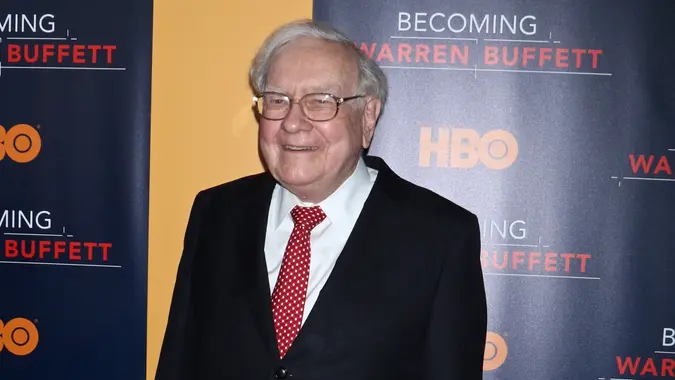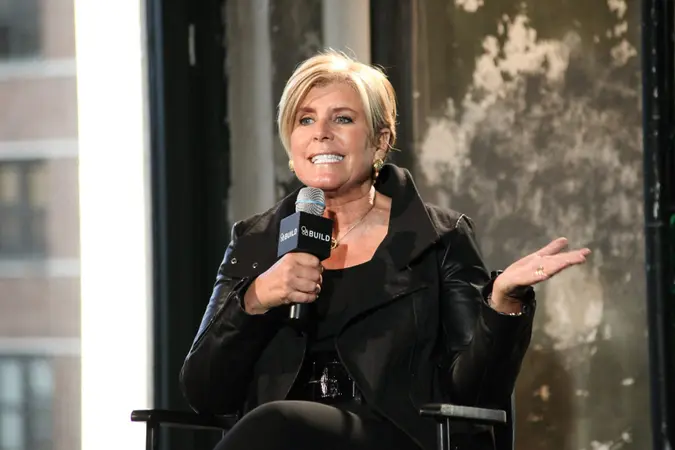Advertiser Disclosure
GOBankingRates works with many financial advertisers to showcase their products and services to our audiences. These brands compensate us to advertise their products in ads across our site. This compensation may impact how and where products appear on this site. We are not a comparison-tool and these offers do not represent all available deposit, investment, loan or credit products.
What $1 Trillion Really Looks Like, Plus More Fascinating Money Facts
 Written by
Levi Leidy
Written by
Levi Leidy
 Edited by
Amber Barkley
Edited by
Amber Barkley

Commitment to Our Readers
GOBankingRates' editorial team is committed to bringing you unbiased reviews and information. We use data-driven methodologies to evaluate financial products and services - our reviews and ratings are not influenced by advertisers. You can read more about our editorial guidelines and our products and services review methodology.

20 YearsHelping You Live Richer

Reviewed by Experts

Trusted by Millions of Readers
There have been countless videos made to try to visualize the wealth held by the likes of Jeff Bezos, Bill Gates and other famous billionaires. Something so vast is very hard to wrap your mind around. So when you talk about a value of $1 trillion, it seems impossible to imagine a single person or entity that could hold that much money — let alone what they might do with it.
But just because it’s hard to imagine doesn’t mean it won’t happen. Billionaire CEO Elon Musk’s wealth has skyrocketed to over $200 billion, according to Forbes, so the reality of the world’s first trillionaire may not be far off.
Here’s a look at some money facts that may surprise you — and the real power of $1 trillion.
US Paper Money Is Not Actually Paper
According to the Bureau of Engraving and Printing, U.S. “paper” currency is actually made up of about 75% cotton and 25% linen. A special thread is woven into bills valued at $5 and above and for $100 bills, a 6-millimeter wide blue security ribbon is woven into the Liberty Bell. You can tilt the bill back and forth to see it and prove that it’s a genuine piece of U.S. currency.
There’s a Reason It’s Green
When the United States first began issuing paper money in 1861, green ink was chosen to prevent photographic counterfeits — at the time, cameras could only take pictures in black and white.
Today, it continues to be used because it’s the most durable color; it naturally resists fading, flaking and discoloration. Green also is associated with growth and stability, which is remarkably on the nose when you consider the security that comes from having plenty of this green stuff at your disposal.
The $20 Bill Is Most Likely To Be Counterfeit
While counterfeiters couldn’t replicate green money back in 1861, they certainly can now. The most common fake bill in the U.S. is the $20, but overseas it’s actually the $100 bill.
Cashiers will use a counterfeit detector pen to snuff out the reals from the fakes, but the government has been proactive in protecting against counterfeiting. The newest batch of $20 bills has “20” printed in the lower right corner in color-change ink. There’s also a light-sensitive security strip to the left of Andrew Jackson, micro-writing, a watermark and lines that are spaced impossibly close together.
A $1 Bill Used To Last Just 18 Months
Small bills like the $1 are the most likely to be shoved into vending machines and crumpled up in pockets, so it’s no wonder they don’t last long. According to the Federal Reserve, a $1 bill used to last just 18 months in 1990. As of 2012, the bill can last up to 70 months.
A $5 bill, on the other hand, lasts 4.7 years, $10 bills last 5.3 years, $20 bills last 7.8 years, the $50 bill lasts 12.2 years and $100 bills are expected to last 22.9 years.
The $100 Bill Is The Most Common and Most Annoying Currency
According to The Wall Street Journal, the $100 bill is the most common and annoying circulation currency. The report cited Federal Reserve data that more $100 bills are circulating than any other denomination, with the amount of them doubling between 2012 and 2022.
The $100 bill is also the most annoying currency because it isn’t always accepted by all retailers. Trying to use a $100 bill can lead to awkward moments when you try to purchase a low-cost item with it and sometimes cashiers will hold up the line to verify that the bill isn’t counterfeit.
For You:
Cash Is the Third Most Used Payment Method
The Wall Street Journal also shared Federal Reserve data showing that 60% of all payments are now made with either a debit or credit card because cash use dropped drastically during the pandemic. Based on the number of transactions, cash is now the country’s third-most used form of payment. This is a vast difference from how currency was originally introduced and there’s no telling as to what form of payment will become more popular in the next decade or so.
The Highest Printed Denomination Was $100,000
Speaking of high bills, the largest denomination note ever printed was the $100,000 gold certificate with a picture of President Woodrow Wilson on the front. These notes were printed between December 18, 1934 and January 9, 1935 for the sole use of transitions between Federal Reserve banks.
The Highest Denomination For a Public Bill Was $10,000
While the average citizen never likely got to see a $100,000 bill, the $10,000 bill was the highest denomination that the federal government circulated for public use. The government stopped production of the $10,000 bill in 1969 and there was never a picture of a president on it. The bill was first printed in 1918 with a portrait of Salmon P. Chase, the treasury secretary, when the National Banking Act was passed.
$1 Trillion and What It Buys
Here are a few things worth $1 trillion:
- Tech company Apple — if you sliced it in one-third
- A $1,000 iPhone for 1 billion people
- Over 4 million “average” homes in the U.S.
- Almost half of American student loan debt
There are currently only 19 countries in the world with a GDP over $1 trillion.
Martin Dasko contributed to the reporting for this article.
Share This Article:




You May Also Like

Net Worth or Income -- Which Each Generation Should Focus on Increasing in 2026
November 12, 2025
5 min Read

Trump Said He'd Cut Energy Prices in Half in 12 Months: Here's Where They're at Today
November 14, 2025
5 min Read

Trump Promises $2K Stimulus Checks, but Are They Legit and Could You Get One?
November 14, 2025
5 min Read



Men Wait, Women Don't -- Who's Right When It Comes to This One Financial Tactic?
November 13, 2025
5 min Read

Warren Buffett: 3 Rules That Built His Wealth & Can Do the Same for You
November 13, 2025
5 min Read



Dave Ramsey: Here's Why You Can't Invest and Pay Off Debt at the Same Time
November 13, 2025
5 min Read

3 Financial Advisors Share the 'Splurges' That Actually Grew Their Wealth
November 14, 2025
5 min Read

Make your money work for you
Get the latest news on investing, money, and more with our free newsletter.
By subscribing, you agree to our Terms of Use and Privacy Policy. Unsubscribe at any time.


Thanks!
You're now subscribed to our newsletter.
Check your inbox for more details.



Sending you timely financial stories that you can bank on.
Sign up for our daily newsletter for the latest financial news and trending topics.
For our full Privacy Policy, click here.
Looks like you're using an adblocker
Please disable your adblocker to enjoy the optimal web experience and access the quality content you appreciate from GOBankingRates.
- AdBlock / uBlock / Brave
- Click the ad blocker extension icon to the right of the address bar
- Disable on this site
- Refresh the page
- Firefox / Edge / DuckDuckGo
- Click on the icon to the left of the address bar
- Disable Tracking Protection
- Refresh the page
- Ghostery
- Click the blue ghost icon to the right of the address bar
- Disable Ad-Blocking, Anti-Tracking, and Never-Consent
- Refresh the page






